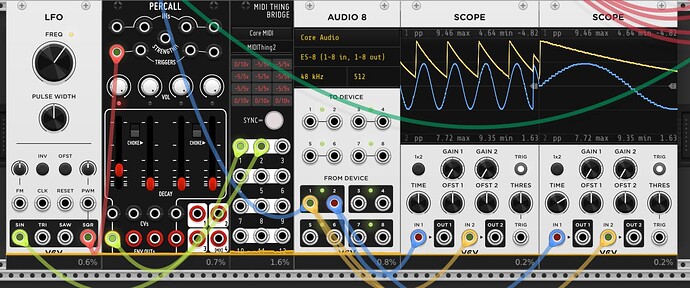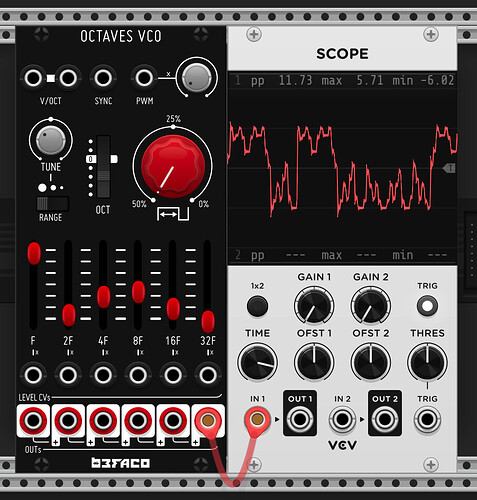MidiThing v2
I think the MidiThing issue has been solved on the firmware side, still only targeting CV rate (rather than audio rate), and subject to limitations of MIDI (14 bit pitch bend channels specifically), but hopefully will be a useful addition (essentially giving you a poor man’s ES8 as a bonus):
Octaves
Befaco recently demonstrated Octaves VCO. I have a prototype up and running if anyone would like to have a play. It’s a “harsh and funky take of an additive Oscillator”. Any feedback welcome
Other
Burst, Voltio and polyphony for PonyVCO should be hitting the library soon!
As always, releases here: Releases · hemmer/Befaco · GitHub

